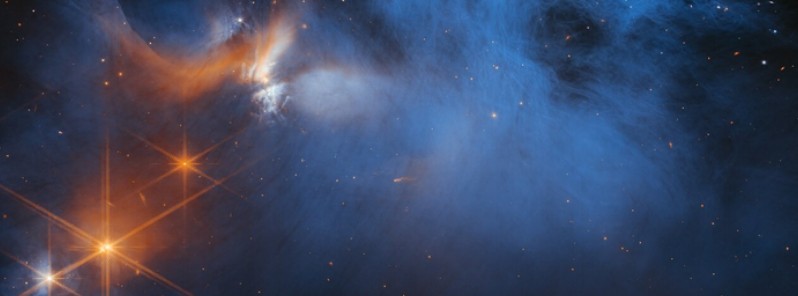An international team of scientists have used the James Webb Space Telescope (JWST) to study ices in interstellar clouds, providing new insights into the chemical processes of one of the coldest, darkest places in the universe. The study, published in Nature Astronomy, found that these ices are formed from the earliest moments of the universe and contain biogenic elements that are important for life.
The JWST, with its 6.5-meter-wide mirror optimized for infrared light, is able to image the densest, darkest clouds in the universe for the first time. The team was able to study ices that exist on dust grains within these clouds, which are protected from the harsh radiation of nearby stars and therefore remain pristine.
One of the key findings of the study is that most interstellar ices contain very small amounts of elements like oxygen and sulfur. The team is trying to understand the lack of sulfur in these ices and has proposed that the sulfur may be locked in reactive minerals like iron sulfide, which may react with ices to form the sulfur-bearing ices observed.
The implications of this finding are far-reaching, as it could help to explain where sulfur is stored in our Solar System and how it is incorporated into planets that may host life. It also has implications for understanding the molecular origins of protoplanetary disks, planetary atmospheres, and other Solar System objects.
The team, which includes scientists from Southwest Research Institute, Leiden University, and NASA, is continuing to study these ices in order to gain a deeper understanding of the chemical processes that take place in these clouds and their potential impact on the universe.
An Ice Age JWST inventory of dense molecular cloud ices – Nature Astronomy – McClure, M.K., Rocha, W.R.M., Pontoppidan, K.M. et al. – January 23, 2023 – https://doi.org/10.1038/s41550-022-01875-w




